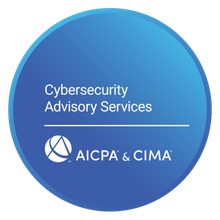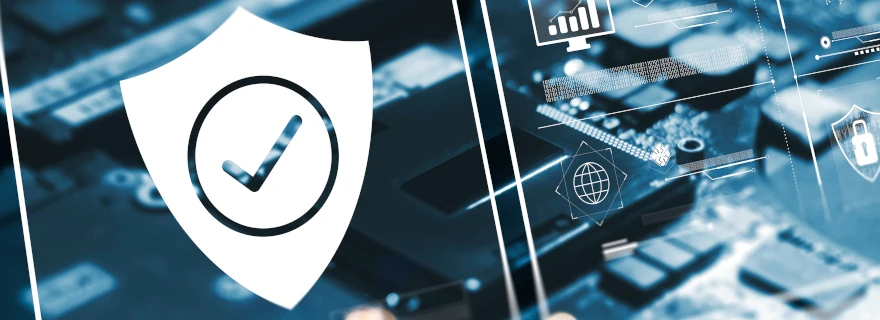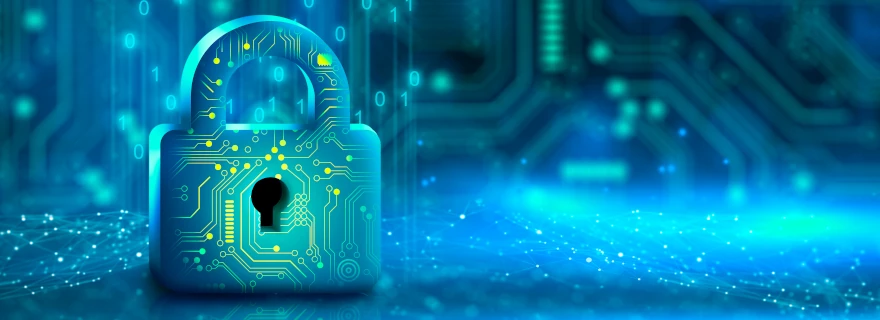2FA for Tax Software and Everywhere Else - Security Six
In today's digital age, passwords alone are no longer sufficient to protect sensitive data, especially for businesses that handle confidential client information like tax preparers. Hackers and cybercriminals are always on the lookout for vulnerabilities to exploit and gain unauthorized access to valuable data. That's why it's essential to implement an additional layer of security known as two-factor authentication (2FA).
2FA requires users to provide two forms of identification, usually a password and a unique code or token, to access their accounts. This security measure significantly reduces the risk of unauthorized access, even if a hacker manages to obtain a user's password through a phishing scam or malware attack.
The Internal Revenue Service (IRS) recognizes the importance of 2FA and encourages tax preparers to implement it wherever possible. In fact, the IRS recommends the use of multi-factor authentication (MFA), which includes more than two layers of authentication for maximum security.
Implementing 2FA may seem like a hassle, but the benefits far outweigh the inconvenience. By taking this step to improve your security, you can safeguard your business against potential cyber attacks and mitigate the risk of data breaches that can result in significant financial losses and reputational damage.
Exploring Popular Methods of 2FA for Enhanced Security
Two-factor authentication (2FA) has become a critical security measure for protecting digital accounts from unauthorized access. Commonly used in online banking, social media, and email services, 2FA adds an extra layer of security to the traditional password method by requiring a second form of authentication.
There are several common methods of 2FA, including using a mobile app or hardware token that generates a unique code every time a user logs in. The mobile app or hardware token may generate a one-time passcode, which the user needs to enter in addition to their password to access their account. In this method, the user is the only person who can generate the code because the mobile device or hardware token is in their possession.
Another popular method is receiving a code via email, SMS text message, or voice call. In this method, the user provides their phone number or email address during the account setup process. When logging in, they receive a unique code that they need to enter in addition to their password. The code is typically valid for a limited time, usually a few minutes, and can only be used once.
Using a biometric factor, such as a fingerprint or facial recognition, is another increasingly popular 2FA method. In this method, the user provides a unique biological identifier in addition to their password to log in. This method is highly secure because biometric identifiers are unique to each person and difficult to forge. However, not all devices and applications support biometric authentication, which can limit the usage of this method.
Regardless of the specific method, these additional verification steps provide an extra layer of security that can prevent unauthorized access to sensitive data, ultimately protecting not only your business but also your clients' confidential information. Using 2FA can also help protect against phishing attacks and social engineering tactics, where an attacker may try to obtain a user's password through deception.
Enhanced Security with 2FA: Advantages and Benefits
Two-factor authentication (2FA) has gained immense popularity in recent years, as more individuals and businesses are recognizing the importance of data security. 2FA provides an additional layer of protection to your digital accounts by adding an extra verification step in addition to a traditional password. Here are some of the benefits of implementing 2FA:
-
Enhanced Security: 2FA makes it significantly more challenging for an unauthorized person to gain access to your data or account. Even if a hacker were to obtain your password, they would still need to have access to your secondary authentication factor, such as your mobile device or hardware token.
-
Mitigates the Risk of Password Compromise: Password compromise is one of the most common causes of data breaches. However, with 2FA, even if your password is stolen, an unauthorized person cannot access your account without the additional authentication factor.
-
Protection Against Stolen Devices: In the case of a lost or stolen device, 2FA ensures that the thief cannot access your account without the secondary authentication factor. This significantly reduces the risk of a data breach due to device theft.
-
Complementary to Other Security Measures: 2FA can be used in conjunction with other security measures, such as firewalls and antivirus software, to provide comprehensive data security.
-
Secure Data Entry: 2FA is particularly useful when entering sensitive information on a device that may be compromised. It ensures that the person entering the data is authorized to do so, preventing unauthorized access to confidential information.
2FA provides several benefits for enhancing data security. By adding an additional layer of protection, it makes it more challenging for an unauthorized person to gain access to your data or account, mitigates the risk of password compromise, protects against stolen devices, can be used in conjunction with other security measures, and ensures secure data entry.
IRS Recommendations for Enhanced Security through 2FA
The Internal Revenue Service (IRS) has made recommendations for tax software users to increase their digital security through the use of multi-factor authentication (2FA). These recommendations apply to both individual taxpayers and tax professionals who use tax software products. Here are some of the recommended practices:
-
Use the Most Secure 2FA Option Available The most secure option available for 2FA should be used not only for tax software but also for other products such as email accounts and storage provider accounts. This means selecting the strongest 2FA option available when setting up your account, such as a mobile app or hardware token that generates a unique code every time you log in.
-
Minimum Standards for Remote Access When accessing the firm's office network remotely, it is recommended to use a secure Virtual Private Network (VPN) in combination with 2FA. The use of a VPN will provide an additional layer of security and prevent unauthorized access to the network.
-
Use 2FA and Strong Passwords for Cloud Storage If using a cloud storage service, it is important to use strong passwords and enable 2FA options. Cloud storage services are a common target for cyber criminals, who may attempt to pose as legitimate providers to gain access to your data.
-
Consider Additional MFA for Hosting Your Own Website If you are hosting your own website, the IRS recommends using an additional form of multi-factor authentication (MFA) to further increase your login security. This will help prevent unauthorized access to your website and sensitive data.
By following these recommendations, you can significantly enhance the security of your digital accounts and protect your sensitive data from unauthorized access. It is important to stay up to date on the latest security practices and use them consistently to prevent cyber attacks.
How to Educate Your Employees on the Importance of Two-Factor Authentication
If you're a business owner or manager, it's essential to educate your employees on the importance of 2FA and how to use it properly. Here are a few tips for doing so:
- Provide training: Hold regular training sessions to educate your employees on the importance of 2FA and how to set it up on their accounts.
- Lead by example: Enable 2FA on your own accounts and encourage your employees to do the same.
- Create policies: Develop policies around 2FA use, such as requiring it for all employees and specifying which types of 2FA are allowed.
- Monitor usage: Keep track of which employees have enabled 2FA and follow up with those who haven't to ensure they do so.
By educating your employees on the importance of 2FA and making it a priority in your organization, you can significantly reduce the risk of security breaches and data loss.
The Importance of Enabling 2FA to Avoid Security Risks and Consequences
Enabling two-factor authentication (2FA) is crucial to protect your digital accounts from unauthorized access and potential security risks. With the increasing frequency of data breaches and cyber attacks, relying solely on passwords for account security is no longer adequate.
By requiring a secondary factor in addition to a password, such as a fingerprint, a unique code sent to your phone or email, or an authenticator app, 2FA adds an extra layer of protection to your accounts. This can help prevent malicious activities, including data theft or deletion.
As mentioned earlier, the IRS has made it mandatory for all tax software to have 2FA enabled as of 2022. Failure to comply with this regulation could result in fines or even suspension or loss of PTIN. Therefore, it is essential for tax preparers to ensure that 2FA is enabled and functioning correctly on all their tax software and related applications.
There are several types of 2FA, including one-time passcodes, biological authentication, and hardware tokens. Each method combines what only the user should know (password) with what only the user should have (e.g., cell phone, fingerprint scanner, or hardware token).
Enabling 2FA is a simple yet effective security measure that can provide an additional layer of protection to your accounts. It is always better to take proactive measures to protect sensitive data than to suffer the consequences of a security breach.
How to Enable Two-Factor Authentication on Popular Websites and Applications
Enabling two-factor authentication on websites and applications is a crucial step in securing your online accounts. While the process for enabling 2FA can vary depending on the site or app, there are some general steps you can follow:
- Go to your account settings and look for the "security" or "privacy" section.
- Look for an option to enable two-factor authentication or "2FA."
- Choose the type of 2FA you want to use, such as a text message code, an authenticator app, or a hardware token.
- Follow the instructions to set up 2FA for your account, which may include downloading an app, scanning a QR code, or entering a phone number.
Some popular websites and applications that support 2FA include Google, Facebook, Twitter, Dropbox, and Amazon. By enabling 2FA on these sites and others, you can significantly reduce the risk of unauthorized access to your accounts.
In conclusion, if you haven't enabled 2FA on your accounts yet, it is recommended to do so as soon as possible. If you have any questions or concerns about digital security and compliance, it is advisable to seek the guidance of a compliance expert. Remember, protecting your accounts is crucial for safeguarding your sensitive data and maintaining compliance with regulatory requirements.






